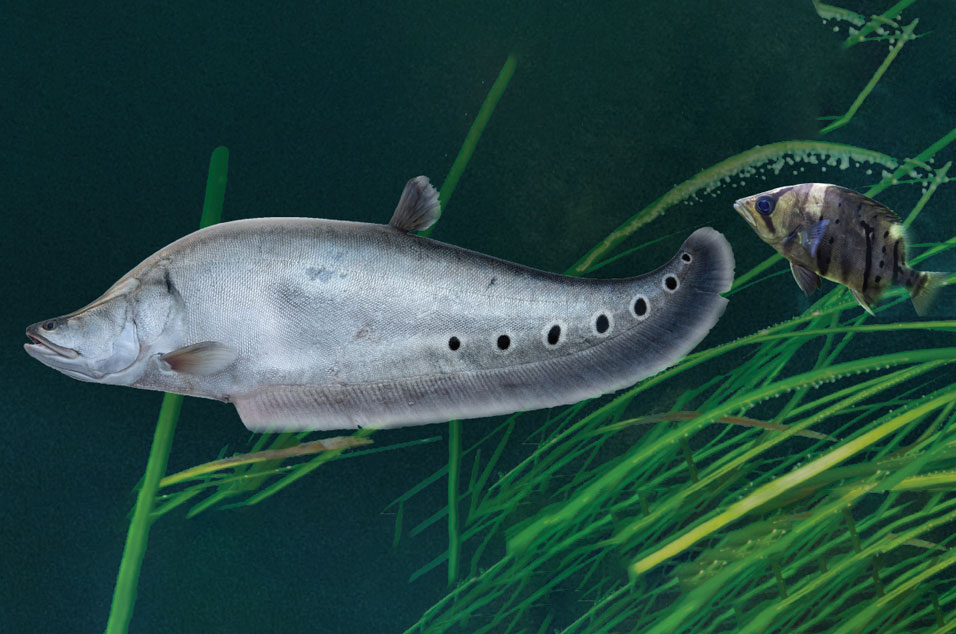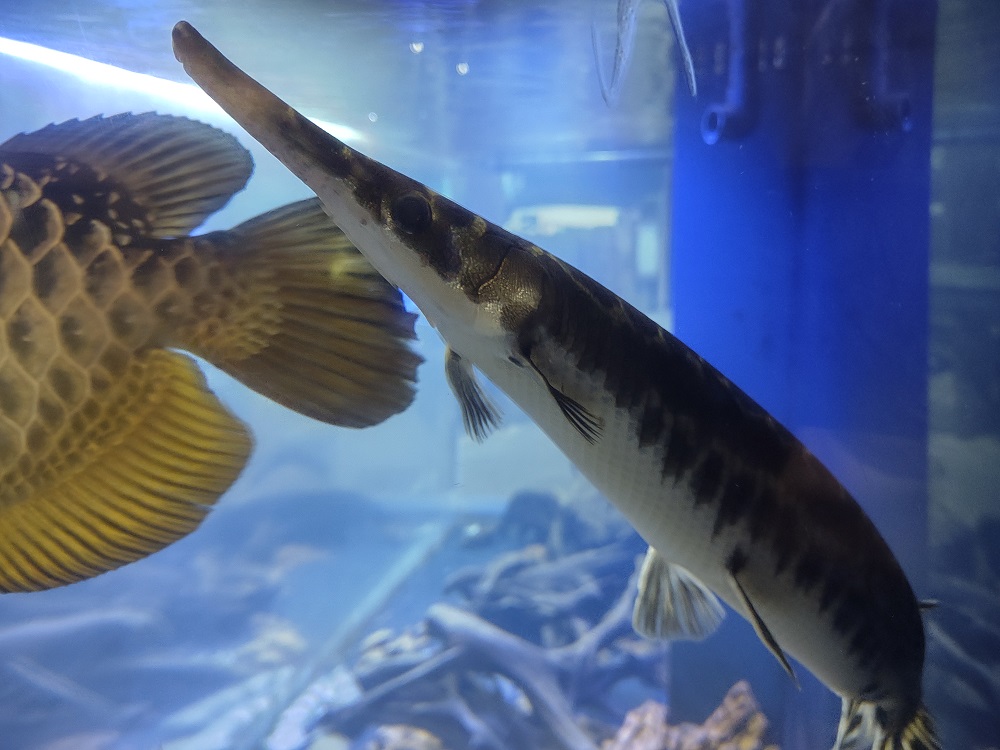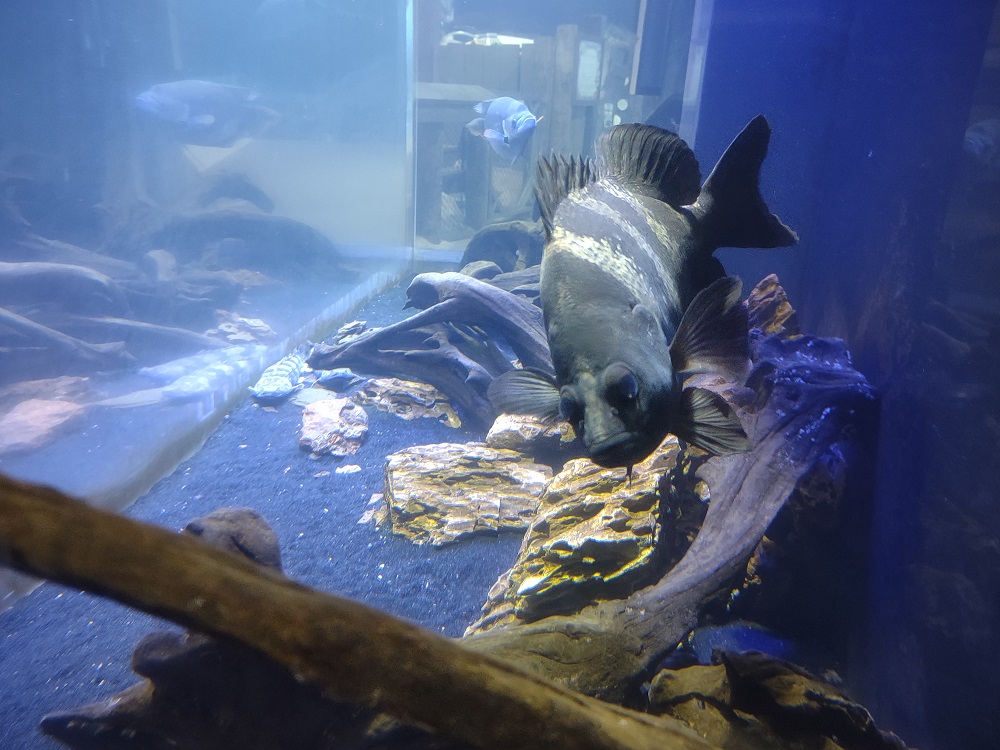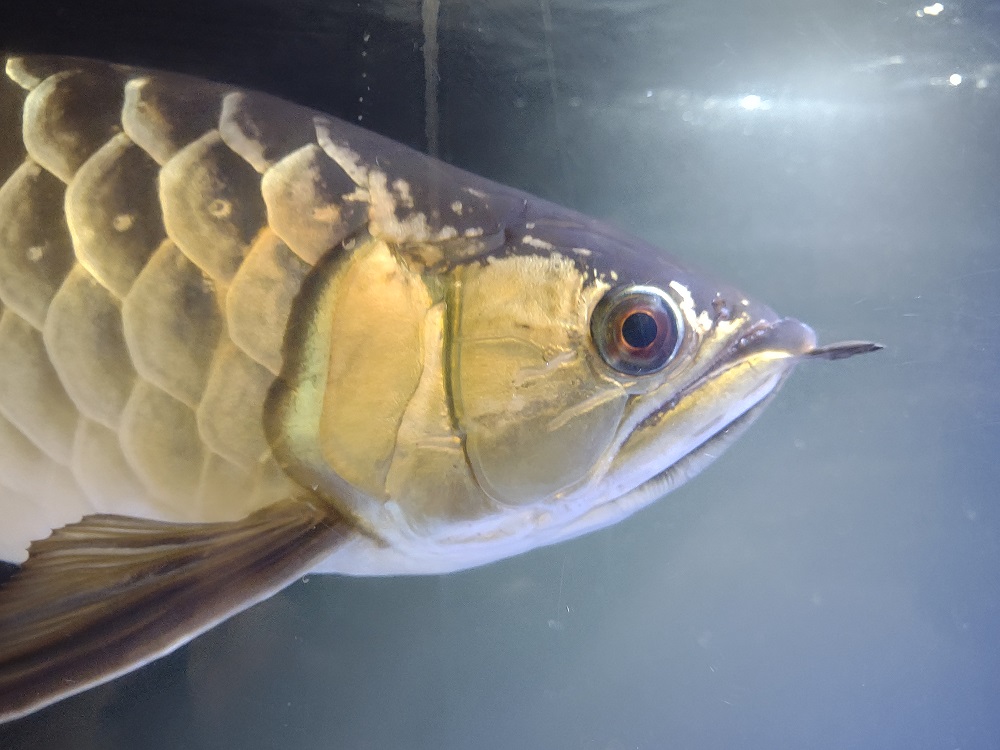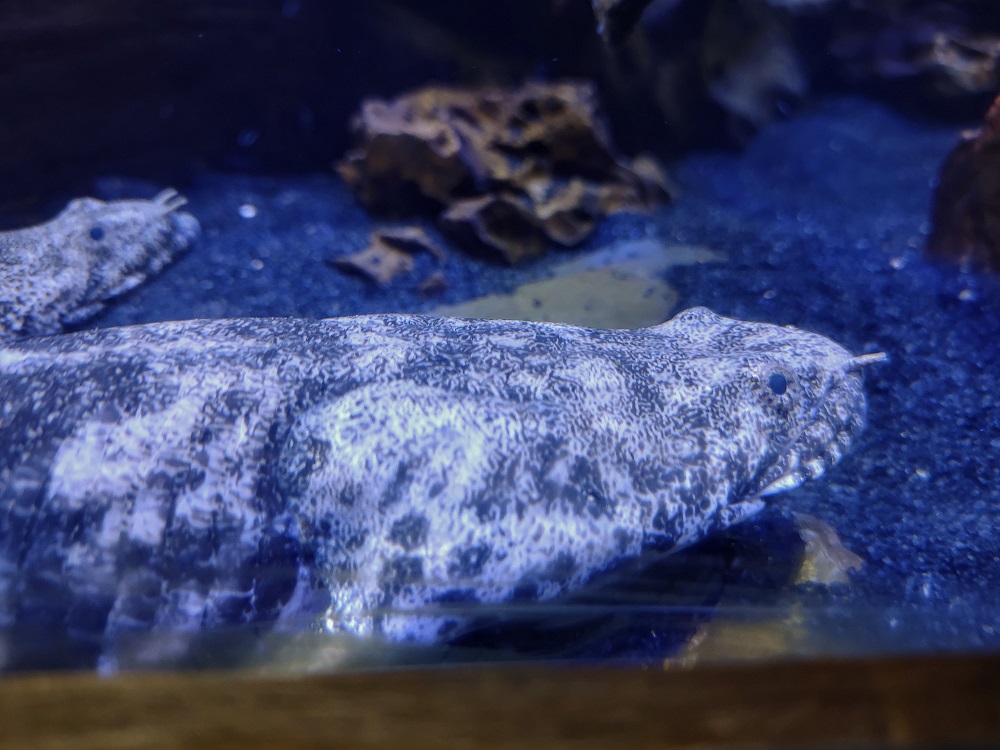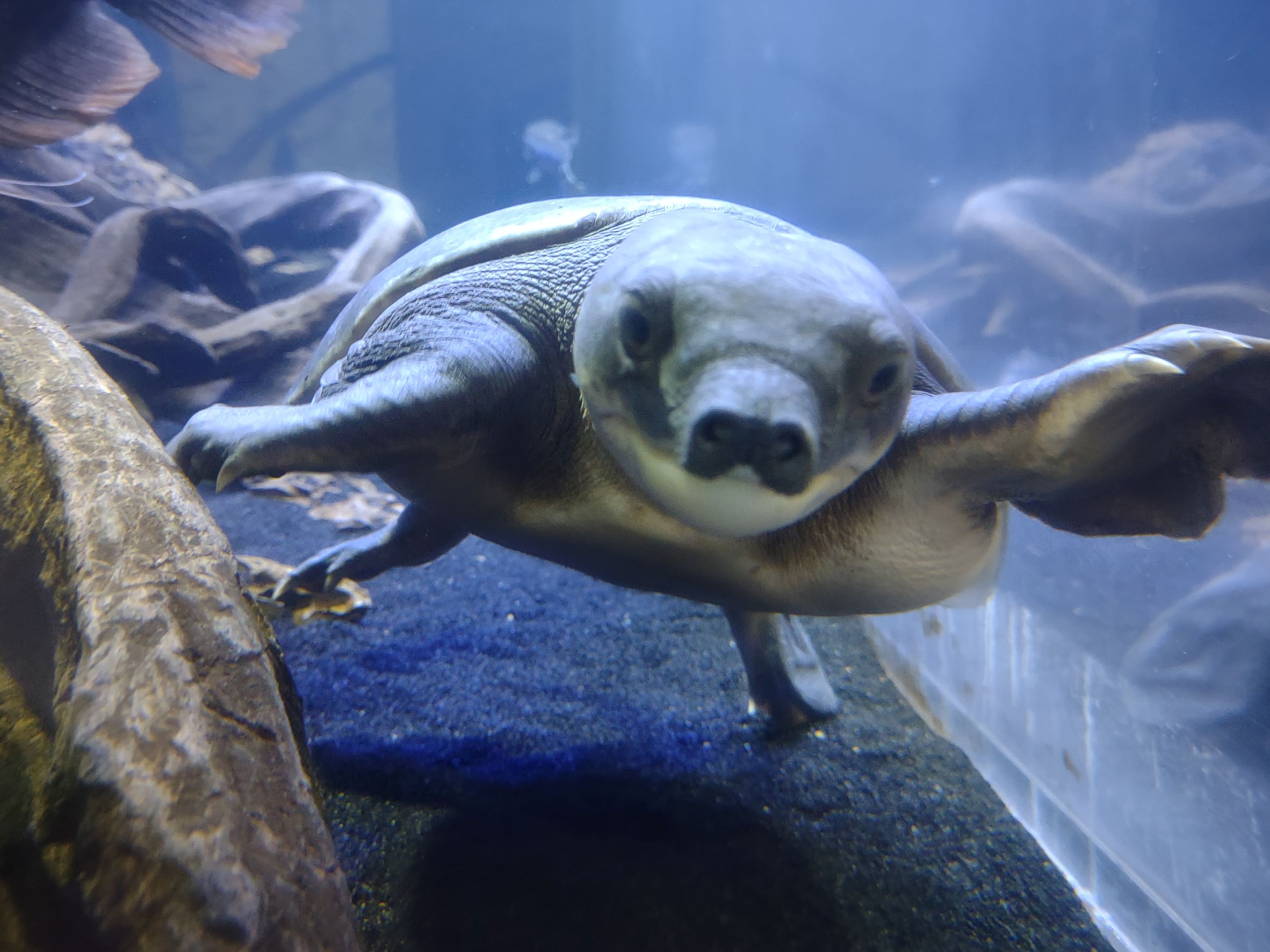The term “Old World,” informally refers to the continents of Africa, Asia, and Europe, though we are grouping Australia into this description as well! This habitat showcases some of the largest, most beautiful, and most interesting aquatic animals from these continents! Though you’d never see these fish living together in the wild, this habitat can help us learn about the many adaptations that they have evolved to help them survive in the tropical, freshwater environments in which they can be found. Like many species from these environments, many of our Old-World Wonders are either threatened or pose environmental risk due to human activities. Meet some of these Wonders below:
Fly River Turtle (Carettochelys inscultpa)
Also known as the Pig-Nosed Turtle because of its odd, fleshy snout, it uses this snout like a snorkel to breathe air at the surface, helping it to survive in oxygen-poor waters. It also uses the nose as a sensory organ to help it find food, such as mollusks or crustaceans, in the murky freshwater lakes and river systems where it lives. Sadly, this is one of the last remaining turtle species of its kind on Earth, and its populations are suffering to due hunting, poaching and illegal smuggling for food and the pet trade.
Giant Clown Knifefish (Chitala ornata)
These nocturnal giants can grow up to 3 feet, and are sometimes called “Featherbacks” because of their long, slim dorsal fin that ripples as it swims. These fish produce weak electrical impulses with a special electric organ that help them to find food in the dark! This electro locating ability also allows them to find mates and communicate with one another! While populations of these fish are healthy, they have escaped and established themselves in other regions in Asia, as well as in Florida in the United States (probably from a pet release). These fish can destroy freshwater ecosystems, feeding on a number of important fish species that humans rely on for food.
Dragon Bichir (Polypterus species)
Pronounced “bee-sheer,” these long fish resemble dragons because of the divided dorsal fin on their back. They are nocturnal predators, and will often lie in wait for prey on the river bottom. They also have lungs in addition to their gills, and are able to survive on land for a while if kept moist, allowing them to survive on land for a short period of time in times of drought or if water oxygen content is low.
Australian Arowana (Scleropages jardinii)
The Australian Arowana prefers to live in river drainage points toward the north of the continent, which are rich in organic material and low-hanging plant life. These fish feed love to feed on insects and other small animals that fall onto or get too close to the river surface, and are known to be powerful jumpers! In this species, females practice mouthbrooding where they incubate their eggs and protect their babies in their mouth!
Asian Tigerfish (Datnioides species)
The tigerfish, sometimes referred to as “datnoids,” are commonly found in freshwater and brackish ecosystems from India to Southeast Asia. They are predators on small fish and crustaceans, and likely use their striped patterns as a form of camouflage with aquatic plants and grasses where they live. There are several different species of datnoids, and at least one, the Siamese Tigerfish (Datniodes pulcher) is critically endangered due to over collecting and the illegal animal trade.
African Squeaker Catfish (Synodontis species)
There are many species of Synodontis catfish throughout freshwater ecosystems in Africa. They are sometimes known as “Squeakers” because of the loud noise they produce with their pectoral fins if disturbed. These fish are omnivores, feeding on insects, algae and decaying organic material. Some species have even taken to swimming upside-down at the water surface to pick off insects that fall onto the water surface!
